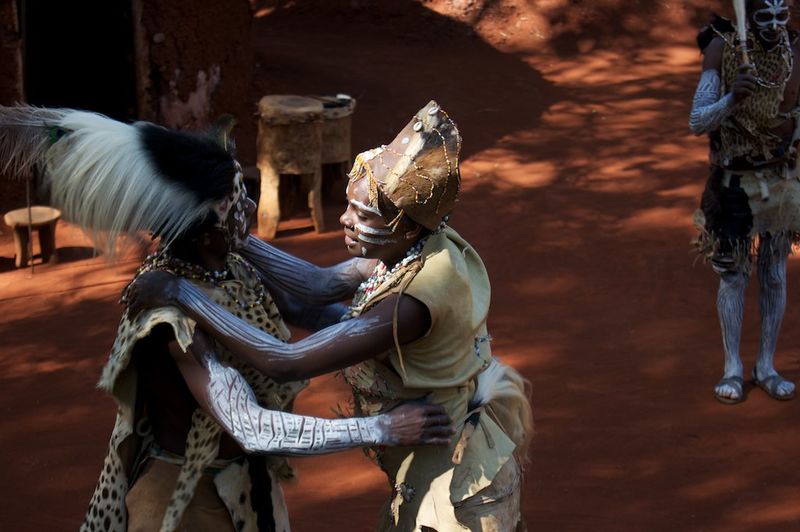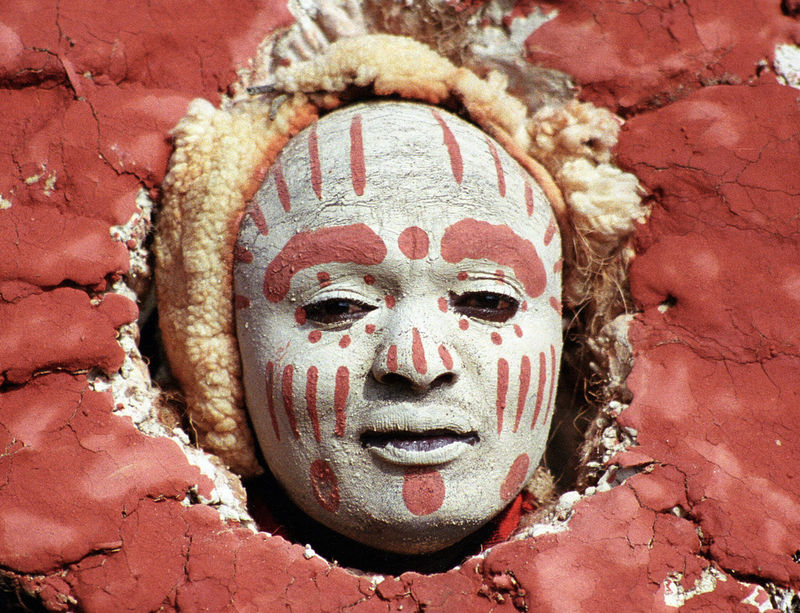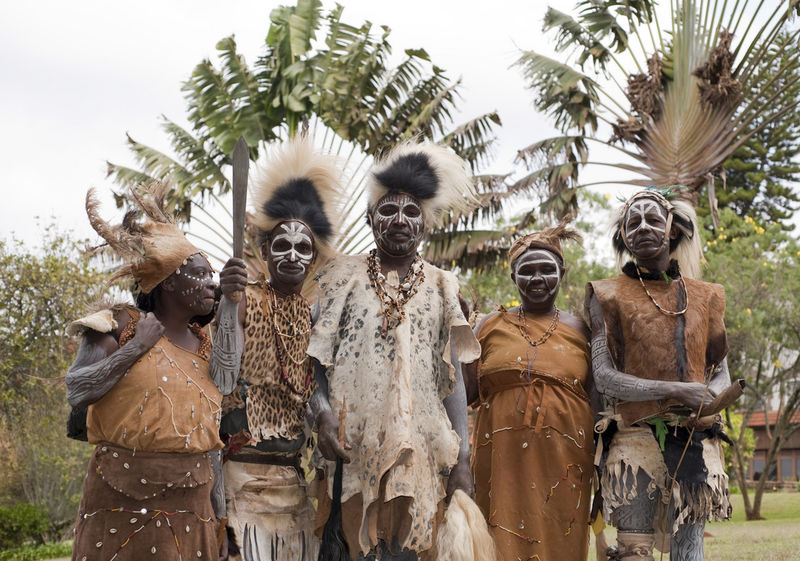Kikuyu Wedding
Kikuyu weddings start with the groom expressing his wish to marry and bringing gifts ("kuhanda ithigi"), followed by dowry negotiations ("ruracio"). The wedding day ("ngurario") features singing, the groom identifying his bride, ritual meat sharing, and symbolic acts like the bride combing the groom's hair, ending with the public reading of the wedding certificate.
Kikuyu Wedding
Almost one quarter of the population in Kenya are the Kikuyu people. They call themselves the Gikuyu. The following lines will describe the local wedding traditions. Unfortunately many of them are not followed anymore.
When the man would like to marry a certain woman he and the group of men visit her father. There he expresses his wish. This tradition is called the "kuhanda ithigi"("planting twigs"). The groom-to-be has to bring some gifts.
What follows is yet another visit. It is known as the "kumenya mucii" ("getting to know the home"). Now the groom's parents visit the bride's parents. There they determine the date when the ceremony of "ruracio" ("dowry payment") will be held.

According to the Kikuyus one woman has the "value" of 99 goats. The groom's parents can keep one goat and that way have the base for the new flock. In practice the groom's family can give the money instead of animals.
The dowry includes objects meant for men ("athuri") and those meant for women ("atumia"). Some objects for men are goats, sheep etc. Women traditionally get pottery, clothes etc. Items can vary according to the social status and region.
Old family members or chosen representatives actually perform the negotiations for the "ruracio". A festive meal is held after the negotiations are successfully ended.

The traditional Kikuyu wedding is called the "ngurario". On the wedding day the groom, his parents and other people accompanying arrive at the bride's home. But they are not allowed to enter the house.
A tradition called "kuhura hoti" is performed. The women from the groom's procession start to sing. They carry various gifts. The women inside the house also sing. After some time the door is finally opened. In some communities an extra amount of money has to be paid for the door to be opened.
What follows is kind of game where a groom has to recognize his bride among the group of woman dressed in the same clothes. This tradition is known as "gucagura muka wake". If he makes a mistake he has to pay some money.
After finding the bride the groom has to ritually cut the goat meat prepared for the occasion. Then he shares the meat to some of his and bride's family member. The groom also has to answer couple of question asked by the representative of the bride's family.

According to a tradition called "kuria matu" the groom gives the bride goat's ears. She eats them. After that she gives the goat's ears to him. This act should remind them that they should always listen to each other. Single women present there also eat goat's ears.
The bride also has some duties to perform during the wedding day. She combs the groom's hair. She also polishes his shoes. She will cut his nails. She also offers him some porridge ("gukundania ucuru"). Traditionally he first refuses it. But after getting a gift he changes his mind.
The couple gets the wedding certificate. There is a tradition according to which the certificate is read in public.
References
Kikuyu people
https://en.wikipedia.org/wiki/Kikuyu-people
Kenyan Wedding Traditions - Kikuyu Culture
http://blissful.co.ke/blog/kenyan-wedding-traditions-%E2%80%93-kikuyu-culture
Kikuyu traditions prior to the wedding
http://nairobiweddingjourney.blogspot.hr/2013/01/kikuyu-traditions-prior-to-wedding.html
Grace Mwangi, Kikuyu Traditional Wedding (Ngurario)
http://www.elimuasilia.org/culture/206-kikuyu-traditional-wedding-ngurario.html
Image(s)
Kikuyu people in their traditional clothes (photo by Andy Davy,
Flickr)
https://www.flickr.com/photos/66896566@N00/3891168850/in/photolist-wy9N1c-bkmEoQ-9a6w7T-dbGpXL-dbGnTi-bbCc8z-bbCbHR-bbCbhp-bbCaS6-bbCasv-bbC9Z4-bbC9vc-bbC93e-bbC8vn-bbC7Yz-5vTb6e-rx7LP-Bd9pS-kHpL-kHpD-9S47a-dbGq2q-e5UguS-d4bP3W-4YxKru-5hkJAK-7b5GFB-e6qBie-xy5Mv-e6qyoB-b9RpwX-b9Rp2i-7ta6Pk-7te4vL-dbzRWX-dbzRVX-6VRfW7-2t8Sn-64JRMu-dbzRZD-882etW-6t8wBh-aoNw3a-64EtYZ
Kikuyu man (photo by Retlaw Snellac Photography, Flickr)
https://www.flickr.com/photos/waltercallens/3736401474/
Kikuyu people (photo by Adam Posey, Flickr)
https://www.flickr.com/photos/adamposey/5388714212/in/photolist-7jfCCA-wz89rR-6qmvh1-gfhJ8e-9BMSvv-cmx6KJ-cmx6mj-cmx5JL-cmx5n1-7jbJ2n-7jbKig-4q5xHB-3m93TJ-bkTUoT-bkTTeK-bkTRTv-8kR42Z-bkTQEr-bkTPix-cmx4Ay-cgZjzN-cgZePs-9dbyZJ-7jfBqb-bqDy7i